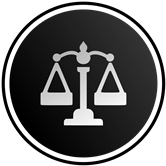Updated on November 01, 2025 05:33:18 PM
The problem of money recovery, whether individual or professional in nature, has maximally escalated in today's complex financial world. To deal with issues like reclamation of what rightfully belongs to any individual or business house, one often has to contemplate a money recovery suit, which is a structured approach under the Code of Civil Procedure for recovery of money under CPC.
Success in a suit for recovery of money lies in knowing what one must do. It demands attention at every step of the process, starting from procuring documents to being aware of the court fee. This article simplifies the complexities of the process and throws light on personal money recovery suits, the format of the legal notices, and, last but not the least, the nuances of the court proceedings. Contact Litem Legalis to enhance your prospects for successful money recovery with expert legal assistance.
A suit for money recovery is a form of civil relief and hence is a good remedy for recovering money from defaulter parties. Filed under the Order of the Code of Civil Procedure, 1908 (CPC) is placed as Order 37 under the category of summary suit for recovery of money. This makes it a fast disposal procedure without having a right to defend by the defendant as a matter of course. The main aim of this litigation process is to provide a systematic procedure for recovering debts owed by individuals or businesses or for resolving financial dispute
Money recovery suits can be engaged in a very broad spectrum of scenarios. For instance, the following parties can institute a civil suit for recovery of money in court:
The legal foundation for money suit rests on several key factors:
The knowledge of these aspects of a money recovery suit is important to anyone who intends to undertake a legal process of recovering money. It is always useful and recommended to seek help from an experienced lawyer in dealing with certain issues as recovery suit CPC involves handling of various complications.
First, critically analyze the debt that is to be recovered. Confirm the current outstanding amount and collect all documents, including the invoices, contracts, promissory notes, and all the previous communications with the debtor. The investigation is important in that the legal claim you make is founded on this assessment that you have collected all your evidence, which you will present in court for pursuing the recovery of the amount.
The primary step includes issuing a legal notice to the debtor. The notice should specify the debt due and must claim the same from the debtor. The main constituents of the legal notice format for recovery of money are:
However, the applicant must consult with a professional lawyer or attorney who will guide the complete procedure with every aspect. Litem Legalis can help you obtain a RERA certificate in a hassle-free manner.
When the legal notice does not work out, the final step is to put the suit
Now the case will ultimately be taken to court, where:
Wherever a judgment is in favor of the plaintiff, the court may make the following orders
Filing a money recovery suit requires comprehensive documentation, including:
while following up on the procedure for money recovery, be aware of and avoid such common mistakes that could weaken your case.
Finally, by not obtaining professional advice, expensive mistakes may be made. Employing a good lawyer will guide you through the process and assist in setting up a solid, enforceable claim.
Handling a money recovery suit can be challenging, but it's essential to understand how the process works. The process includes everything from gathering evidence to determining the claim amounts and identifying the correct jurisdiction. This organized approach is designed to help you navigate the complex legal procedures and highlights the importance of proper documentation and compliance with legal requirements.
This aspect may sound inconvenient, but it is always important to remember that the help of an experienced attorney can go a long way in influencing the chances of a money recovery suit. Contact Litem Legalis to enhance your prospects for successful money recovery with expert legal assistance.

Legal Consultation

Expert Lawyers

Lowest Fees

Quick Process
The process of money recovery usually takes some months to over a year, depending on factors such as the debtor's response, court schedules, and post-judgment enforcement actions.
The essential documents required include proof of debt, identity proof, legal notices, relevant agreements. Our team at Litem Legalis assists in compiling all necessary documentation.
In India , civil recovery claims have to be lodged within a period of three years.Suits filed beyond this are found to have no legal standing and thus dismissed.Late must be given reasons for exemption
We offer comprehensive support from assessment to judgment execution, leveraging specialized expertise in debt recovery law and maintain a clear client communication throughout.
Disclaimer: The content provided on this site is intended for informational purposes only. Accessing or utilizing this site and its materials does not establish an attorney-client relationship. The information contained herein does not constitute legal or professional advice and should not be relied upon as such. It is not a substitute for obtaining legal counsel from a qualified attorney licensed in your jurisdiction.